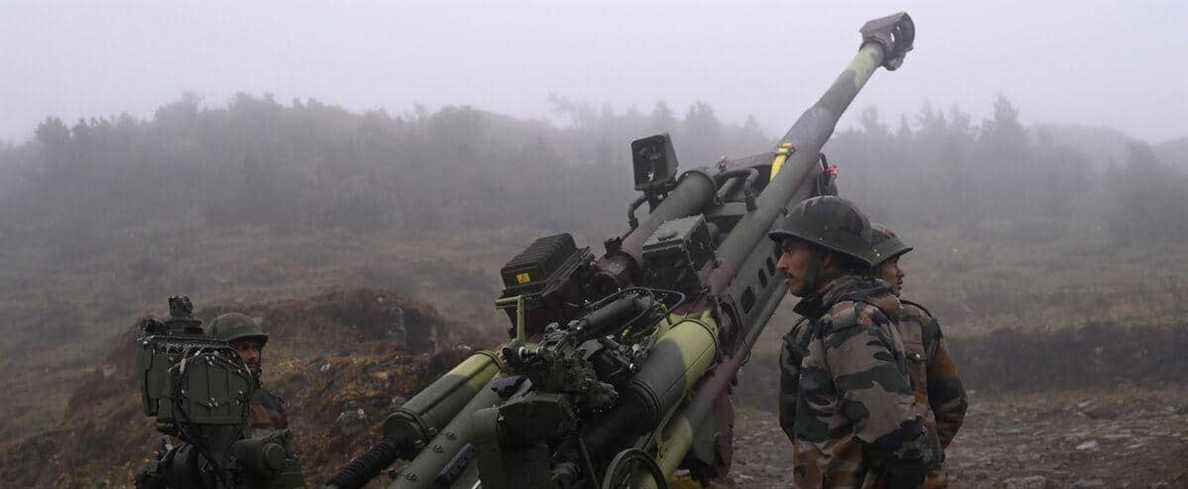TAWANG TOWN, India | The winding road on the outskirts of the Indian border with Tibet, in the Himalayan mountains, offers a picture-postcard panorama where scintillating rivers and peaceful lakes loom in the distance, but you can also see here and there, artillery and military installations.
• Read also: US soldiers secretly train Taiwanese army
A year after clashes in the Ladakh region that killed at least 20 Indian soldiers and four Chinese sides, India is stepping up its defense along the border between Arunachal Pradesh and Tibet, an area under high tension with China.
The Indian state of Arunachal Pradesh, of which Beijing claims sovereignty considering that it is the southern territory of Tibet, had been briefly occupied by China, three years after the flight in March 1959 of the 14th Dalai Lama, during a brief but bloody conflict.
Chinese settlements on the border
The Buddhist leader had taken refuge in this state after the failure of an uprising against Chinese rule in his Tibetan homeland before then settling in Dharamsala in the Indian state of Himachal Pradesh, where he still resides.
The two rival nuclear nations each regularly send patrols to areas claimed or controlled by the other. India further accuses China of establishing permanent settlements close to their border.
“We have observed the development of infrastructure on the Chinese side,” Lieutenant General Manoj Pande told reporters during a rare press visit to the region last month. “This has led to an (increased) number of troops who are now located and installed there.”
New Delhi responded by strengthening its military posture in Arunachal Pradesh, deploying cruise missiles, howitzers, American-made Chinook transport helicopters and drones designed in Israel.
A “hostile” geography
The officers of the region explain that the clashes of last year have highlighted the urgent need to strengthen the defense of the border, after unsuccessful discussions with Beijing to lighten the respective devices.
Temperatures around Tawang (an isolated strategic amlet and one of the closest to Tibet) often drop below zero and oxygen at this altitude becomes scarce. The surrounding military outposts can be cut off from the outside world for weeks on end in winter.
“The geography of the region is hostile to humans,” an Indian army brigadier told AFP, “it can be fatal if you are not in good shape, trained or acclimatized”.
Army engineers are building an imposing road tunnel 4,000 meters above sea level, to be inaugurated next year, to connect the region with arteries further south and extend the radius of the city. action of the soldiers.
“Such tunnels (…) will allow connectivity in all weathers for the inhabitants and the security forces deployed in Tawang”, explained Colonel Parikshit Mehra, director of the project.
A similar project underway in Ladakh, under the rocky terrain of Zojila Pass, will allow troops to mobilize quickly at the border from the huge Indian garrison in Kashmir.
The Dalai Lama “is our god”
The statue of a Buddha overlooks the houses of Tawang, built on a rugged plateau, whose population is predominantly Buddhist like the entire region. Locals rejoice at the attention New Delhi is paying them and worry about the risk of further Chinese incursions and Beijing’s efforts to eradicate Buddhism on this side of the border.
The Chinese government, officially atheist, has made no secret of its intention to appoint a successor to the Dalai Lama, 86, spiritual leader of Tibetan Buddhists.
“We share our culture with Tibet, but today’s China changes Buddhism according to its whims,” denounces Dondup Gyaltsen, a shoe merchant in the main market in Tawang.
Neighboring pharmacist Monpa Golang wants India to firmly oppose “Chinese pressure tactics”.
“Our government should make it clear that no Buddhist will accept that China imposes someone after the Dalai Lama,” adds the 75-year-old man, “he may look human, but he is our god. “.



